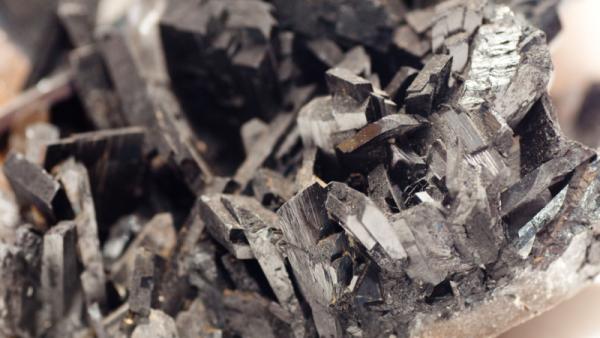Wirestock Creators / Shutterstock

Marina Yue Zhang, Associate Professor – Research, Australia-China Relations Institute, University of Technology Sydney |
This article appeared in the Lowy Institute’s The Interpreter on November 3 2023.
Australian Prime Minister Anthony Albanese’s visit to meet China’s President Xi Jinping underscores that the turbulent waves of Australia-China relations are calming down. On the surface, ties appear to be stabilising, especially in trade. In the lead-up to this significant meeting, both nations have made concessions in hopes of fostering a better bilateral relationship. This can be aptly described using a Chinese idiom: taking one step back to move two steps forward. China has relaxed its tariffs on Australian coal and barley and has begun a review of its tariffs on Australian wine and lobsters. Australia has put on hold its World Trade Organisation (WTO) complaint concerning China’s punitive tariffs.
Yet, beneath this calm façade, deep-seated uncertainties remain. While political leaders, including the prime minister, extol the ‘complementarities’ between the two nations as a cornerstone for mutually benefiting relations, there remains ambiguity about how best to capitalise on potential synergies and what actions might jeopardise the balance.
In geopolitics, complementarity implies a relationship where two entities collaborate to enhance each other’s strengths. Take critical minerals as an example. Australia, endowed with these minerals, such as lithium, functions as the upstream mineral supplier, while China leverages its cost advantages and technological expertise to refine and process these minerals for the global market. This complementarity contributes to clean energy transition.
However, this relationship is under threat, especially with Australia joining the US-led strategy to de-risk critical mineral supply chains from China’s dominance.
The term ‘critical minerals‘, which encompasses 50 minerals including rare earth elements and numerous minerals vital for the clean energy transition, was defined by the United States to address concerns over supply chain security. A mineral’s ‘critical’ designation is not determined by its natural reserves, but rather by its potential to be constrained by adversaries. It appears that when China dominates the processing of a specific mineral, the United States tends to label it as ‘critical’.
Australia’s efforts to restructure its mineral industry in line with the interests of the United States highlight the underlying geopolitics at play. For example, Australia’s Critical Minerals Strategy aims to address concerns about China’s dominance in global supply chains by increasing investment and collaborating with like-minded partners. Albanese recently announced $2 billion in financing for miners and processors of critical minerals, aiming to reduce reliance on China and support the supply chains led by the United States.
While recognising the strategic importance of diversifying mineral supply chains dominated by China is essential, it’s equally crucial for Australia to acknowledge the potential repercussions of weakening trade ties with China concerning these minerals.
China remains Australia’s largest market for many commodities, including energy minerals. Finding alternative markets with processing capacity comparable to China’s is no simple task, at least in the short term. The government has recognised the formidable challenges involved, ranging from substantial required investments to lengthy timelines and stringent environmental regulations.
From Beijing’s perspective, Australia’s alignment with the United States signifies a departure from the complementary relationship in the critical minerals supply chain. The prevailing sentiment in Beijing is that Australia is, once again, being used by the United States as a ‘pawn’ in its strategic competition against China.
On the flip side, the frequent exchanges of high-level officials between the United States and China in recent months, especially the recent visit of China’s Foreign Minister Wang Yi to Washington, might signal that there are areas where the two nations need to collaborate. Climate change stands out as the most probable area in which both sides can find common ground. Chinese investors in clean energy transition, like those in the photovoltaic (PV) sector, seek to invest in and establish production capacity within the American free trade agreement zones. This strategy aims to circumvent the restrictions imposed by the US Inflation Reduction Act, which forbids foreign mineral production from benefiting from US subsidies, but still treats production within free trade agreement zones as ‘local’, making it eligible for US subsidies.
For China, the United States represents a vast and lucrative market for its clean energy products, especially considering its overcapacity in PV production. For the United States, the cost advantages of Chinese-made PV products appeal to consumers grappling with rising energy bills amid escalating inflation.
Australia’s role in the global supply chains for critical minerals is deeply intertwined with geopolitics, notably the China-US rivalry. Foreign investment in this sector could rejuvenate the Australian economy and boost employment, an opportunity Australia should welcome. The challenge lies in selecting the right investors to transition its mineral industry from the ‘digging and shipping’ model to a higher value-added processing model. Australia needs to craft industrial policies prioritising its own national interests and finding partners on the basis of complementarity.
National interests can occasionally be at odds with those of allies or align with those of adversaries. In its dealings with the United States or China, Australia must prioritise its own. This includes not just national security, but also economic stability and environmental sustainability for both the present and the future. Albanese has a chance to discuss with Xi how the two nations might move two steps forward in the bilateral relationship after both have taken one step backward.
Author
Dr Marina Yue Zhang is Associate Professor – Research at the Australia-China Relations Institute, University of Technology Sydney.


